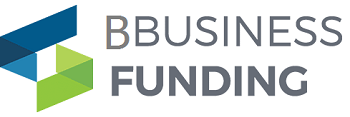When it comes to trading in the Indian stock market, the cost of each trade can directly impact your profit. One of the most important cost factors to understand is brokerage—the fee your broker charges every time you buy or sell securities. But not all brokerage plans are the same. Broadly, Indian brokers offer two types of brokerage models: flat fee and percentage-based. Choosing the right one can make a big difference in how much you keep from your trading gains.
Let’s decode these models and understand which one suits your trading style best.
Flat Fee Brokerage Model
As the name suggests, in a flat fee model, the broker charges a fixed amount per trade, irrespective of the trade size. This fee is typically very competitive—most discount brokers in India charge between ₹10 to ₹20 per executed order.
Who Offers It?
Popular brokers like Zerodha, Upstox, Groww, m.Stock by Mirae Asset, and Dhan offer this model under their low-cost trading plans. These brokers have disrupted the market by eliminating percentage-based fees for intraday and F&O trading.
Who Should Choose This Model?
Flat fee plans are perfect for:
- High-frequency traders
- Intraday and F&O traders
- Traders with large order sizes
For instance, if you’re trading ₹5 lakh worth of stocks and your broker charges a flat ₹20, your effective brokerage rate becomes minuscule compared to a percentage-based model.
Advantages:
- Predictable costs: You always know how much you’ll pay per trade.
- Great for large trades: You save more as your trade size increases.
- Transparent billing: No hidden fees or surprises.
Percentage-Based Brokerage Model
This is the traditional brokerage model where you’re charged a percentage of your trade value, say 0.3% for buying and 0.3% for selling. So, if you buy ₹1 lakh worth of shares, your brokerage would be ₹300.
Who Offers It?
Full-service brokers like ICICI Direct, HDFC Securities, Kotak Securities, and Axis Direct often follow this model. These brokers usually bundle research, advisory, and relationship management into their services.
Who Should Choose This Model?
This model works well for:
- Occasional or low-volume traders
- Investors who need research and advisory support
- Those who place small trades in delivery segment
If you’re investing ₹10,000 at a time in delivery trades, paying a small percentage may not feel significant, especially if you value expert guidance and reports.
Advantages:
- Useful for small, infrequent trades
- Access to advisory services
- Tailored recommendations and relationship support
Brokerage and the Role of Demat & Trading Accounts
To trade in the Indian stock market, you must have two essential accounts:
- A demat account to hold your securities in electronic form
- A trading account to place buy and sell orders in the market
Most brokers offer a bundled account opening service, but the fee structure linked to these accounts varies. Brokers who follow the percentage-based model often charge higher Account Maintenance Charges (AMC) for demat accounts and provide premium services. In contrast, discount brokers offering flat-fee models usually waive off AMC or offer zero-cost demat accounts.
When comparing brokerage plans, don’t forget to evaluate:
- Demat account opening and maintenance charges
- Trading account features like margin availability and order types
- App and platform performance
Your overall trading experience—and profitability—depends not just on brokerage, but on how well your accounts support your trading habits.
Conclusion
Choosing between flat fee and percentage-based brokerage plans is not just about numbers—it’s about aligning costs with your trading goals. Active traders with high volumes and large trades are almost always better off with flat fee plans. On the other hand, if you’re a casual investor who values expert insights and makes occasional small trades, a percentage-based model may suit you better.
Use a brokerage calculator to run the numbers, consider the total costs tied to your demat account and trading account, and pick a plan that lets you trade confidently—without unnecessary fees eating into your profits.

